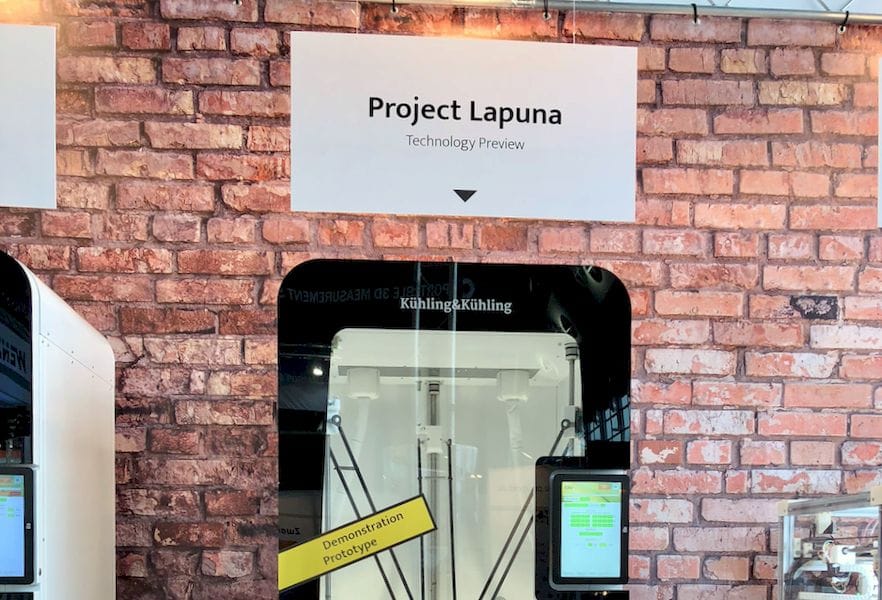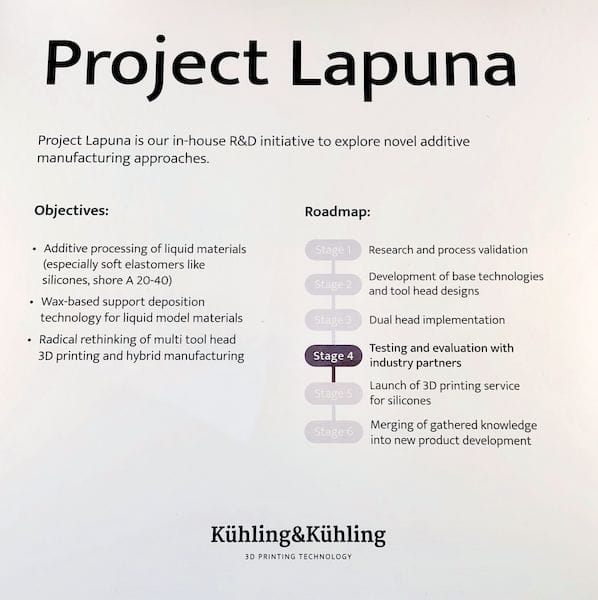
I love secret project names, and Germany’s Kuehling & Kuehling certainly have one: the Lapuna Project.
The small but growing company has been steadily increasing their capabilities over the past few years. Our first encounter with them involved seeing a large RepRap-style 3D printer designed for engineers, which gained a good reputation among customers.
Since then they’ve been refining the machine and introducing far more complex devices, such as the giant VP75 Additive Manufacturing System and the high temperature HT500 2 professional desktop 3D printer.
They’ve also shrewdly arranged a deal with BigRep to market the VP75 through BigRep’s rapidly expanding worldwide distribution system. The arrangement is good for both parties, as the VP75 covers off use cases for BigRep’s clients that are not easily handled by BigRep’s standard equipment. Meanwhile, Kuehling & Kuehling benefit greatly because their powerful machine is now being sold worldwide, far from their home base in Germany. We’re told the VP75 is “selling very well!”

But what’s next for the company? We’re told of something they call the “Lapuna Project”, which is their not-quite-secret code name for an internal development project. It’s within this portfolio that the company will develop its future technology.
What might we see emerge from their efforts? I suspect they are working on a number of different toolheads, and it’s possible even an automated tool changer, something that’s been considered quite difficult to develop properly for production use by most vendors.
Another area of experimentation will no doubt include new materials. In fact, we’ve seen evidence they are developing a silicone 3D printing capability. This is an underserved market, with only a couple of new options available if you want to 3D print flexible silicone objects.

Kuehling & Kuehling’s silicone system seems to produce very intriguing results, as you can see in these images. They have somehow been able to 3D print in very fine detail, whereas most other silicone systems produce rather coarse output. They tell us this could enable unusual 3D printed breathing masks, or interesting medical applications.
I think the materials angle is very interesting for this company, because of a specific feature on the VP75: it uses a vacuum table and temporary build sheet for adhesion. The sheet is made from a material that matches, adhesion-wise, the active print materials. This means that they are able to instantly change materials and supply a suitable adhesion sheet for practically any material type.
3D printing is a very fast-moving industry, and if a company is at the top, it takes considerable effort to stay there, mainly through innovation. It’s clear to me that Kuehling & Kuehling is doing what is necessary in that respect.

